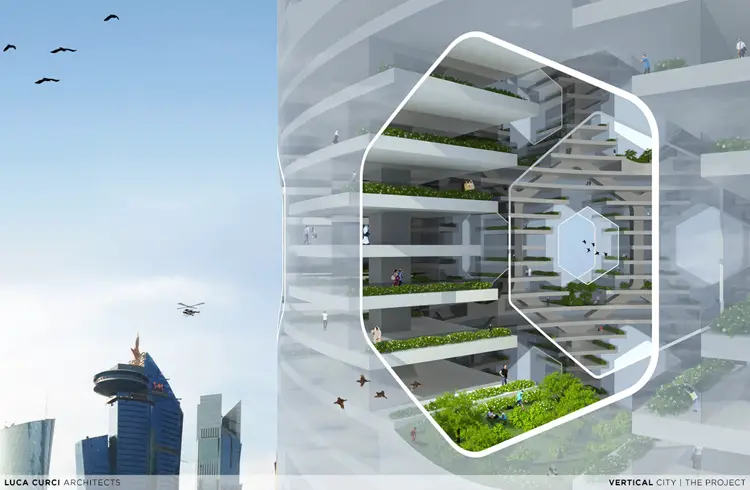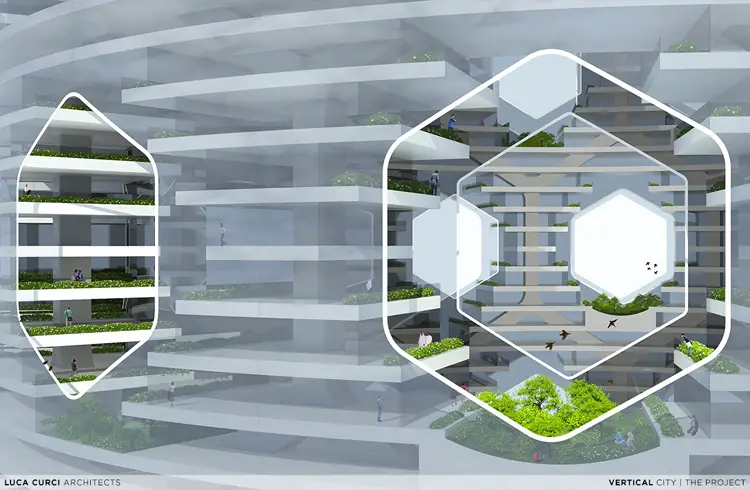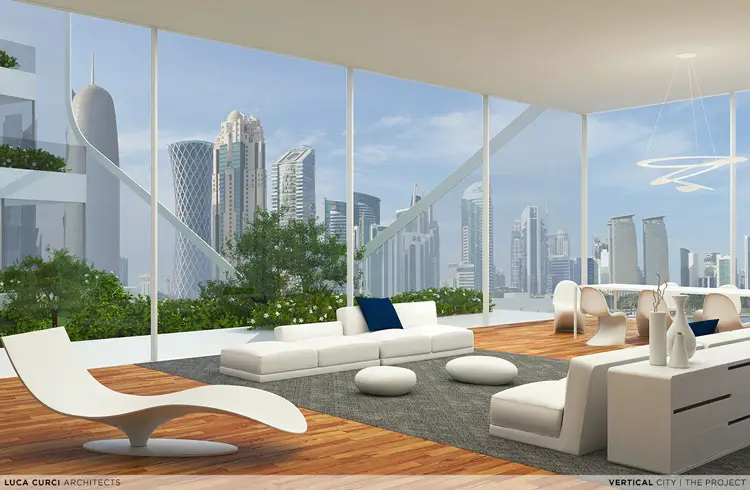
23rd July 2015 A modular vertical city concept Luca Curci architects studio have presented their "Vertical City" concept, a project proposal for a modular city-building settled in the water.
Italian architecture studio, Luca Curci, has presented "Vertical City" – a project proposal for a vertical city-building settled in the water. The project combines sustainability with population density and aims to be a "zero-energy city-building". The architects explain how they analysed the contemporary skyscraper, and re-interpreted it as an opened structure, with green areas on each level and more natural light and ventilation. This new interpretation would allow residents to enjoy a healthier lifestyle, in connection with natural elements and improving their local community.
The building's design is based on a modular structural prefabricated element, which is repeatable horizontally as well as vertically. The singular shape of this element creates a 3-D network which sustains every single floor. The structure is surrounded by a membrane of photovoltaic glasses which provide electricity to the whole building and make it energy independent, with any excess solar energy able to be exported to the mainland. The city-building is completely perforated to permit the circulation of air and light on each level, hosting green areas and vertical gardens. Green zones are spread all over the tower, while meeting and social areas can enhance community life.
The city-building consists of 10 modular layers overlapping. It reaches a height of 750 metres (2,460 ft). With a total volume of 3.8 million cubic metres it can host up to 25,000 people, with green areas encompassing 200,000 square metres, including the public garden square at the top of the building. Each modular and repeatable layer has a diameter of 155 metres (508 ft). The tower has 18 floors, with a mixture of homes, commercial services and other facilities for a large community. Residences have different sizes and shapes for each floor, and they include apartments, duplex and villas.
The building is settled on the sea bottom, with a series of underwater floors that host parking and technical areas, facilities such as spas, mediation centres and gym and luxury hotels rooms with underwater views. It is possible to reach the Vertical City by water, by land or by air. The circular basement is equipped with external and internal docks and three naval entries: large boats can dock at the external berths, permitting public or private smaller boats only, to navigate in the inner gulf. A connection with the mainland is made possible through a semi-submersed bridge for pedestrians, cars and public electric transports, which connect the land with the basement underwater. The tower also features a heliport connected with the upper garden-square and vertical linking-installations. The architects conclude that Vertical City is "a modular interpretation of the contemporary city – and possible future."
Comments »
|











